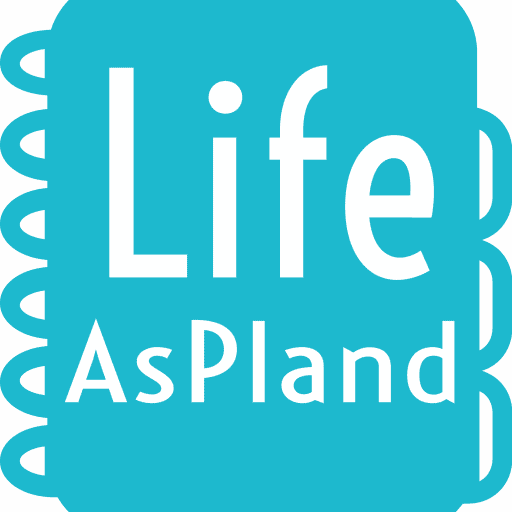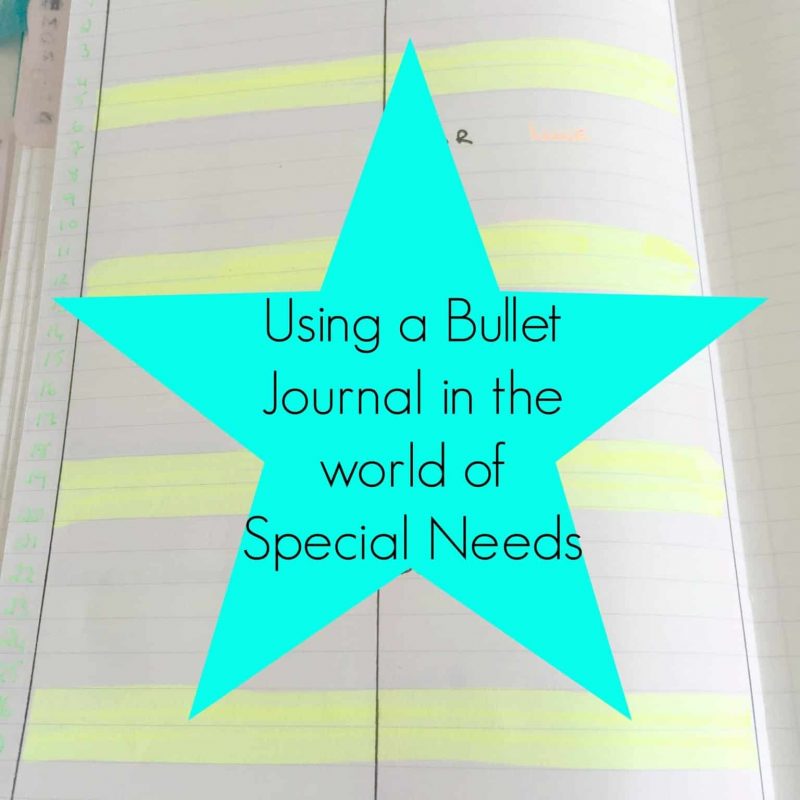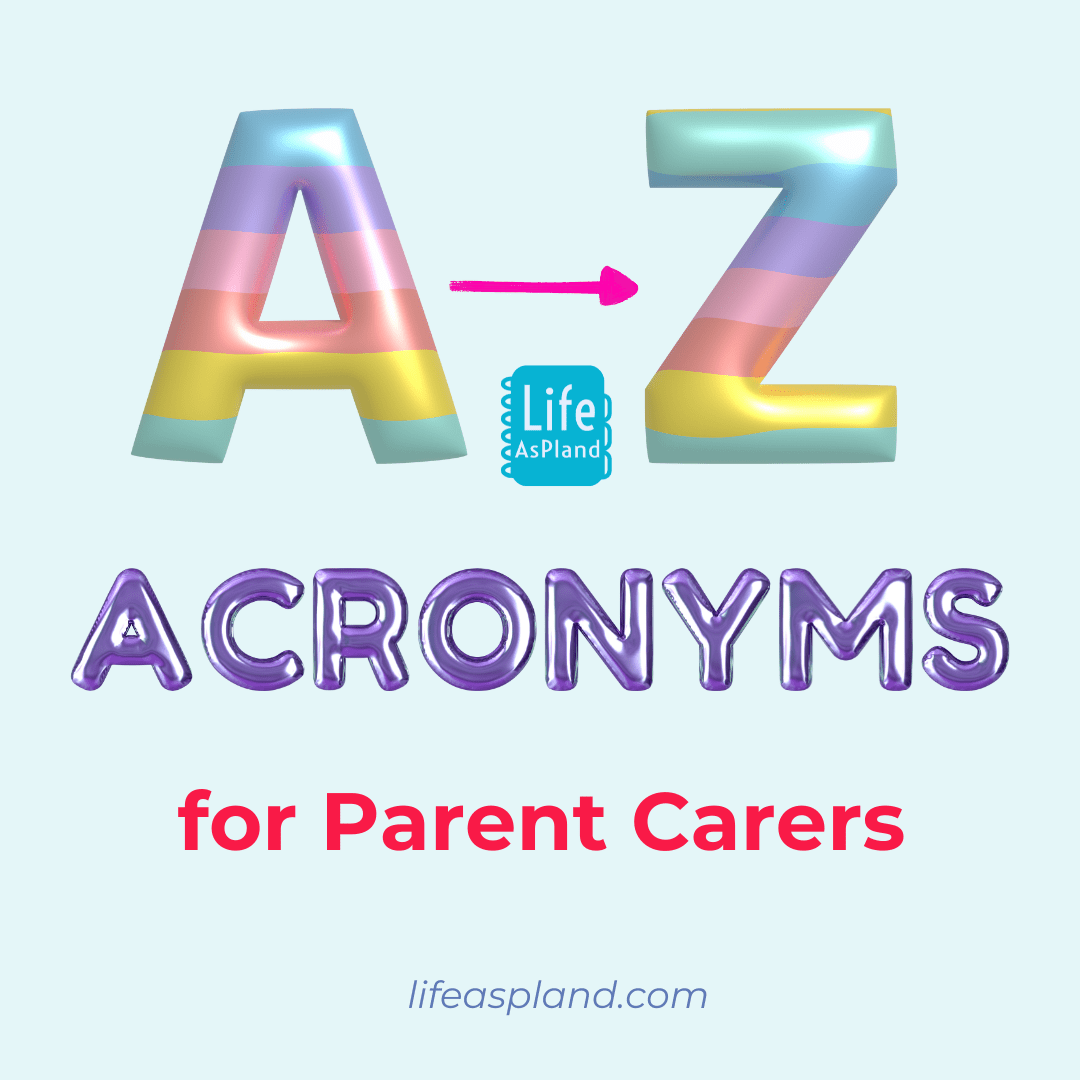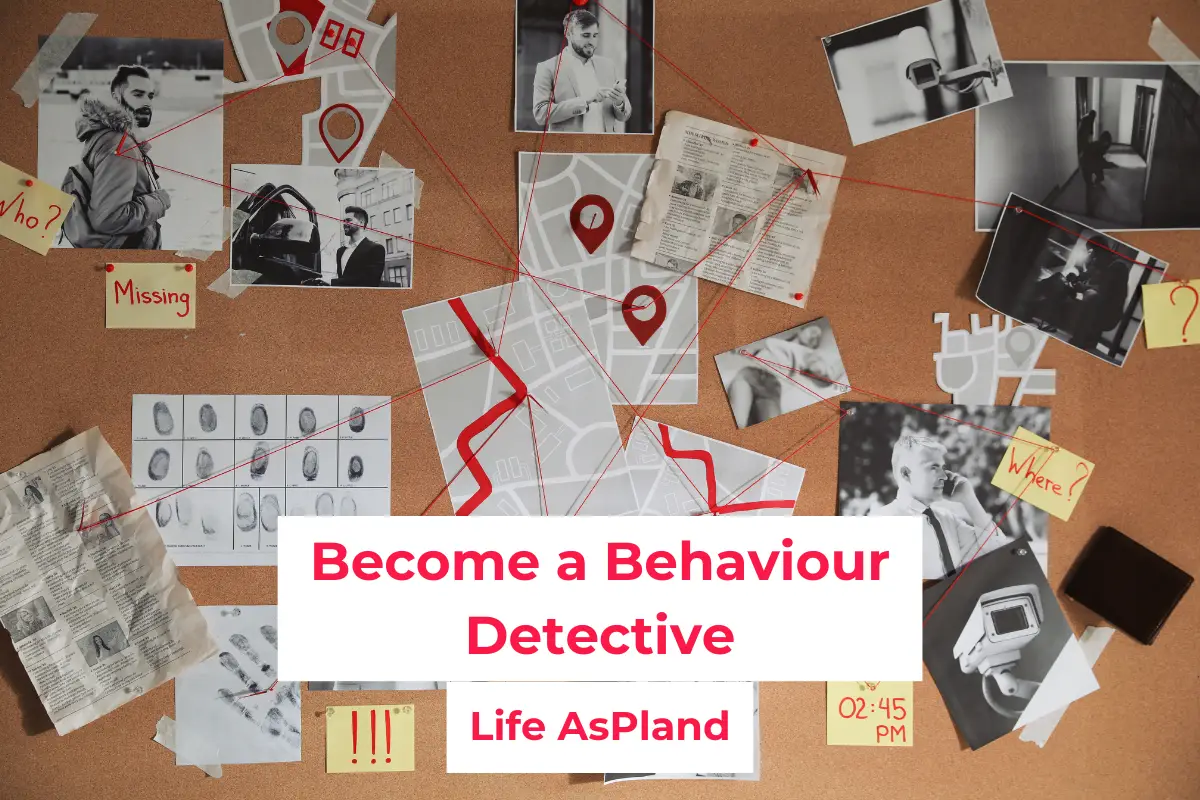As you all know I am a huge fan of the Bullet Journal and I am an even bigger fan of my three fabulous children, each of whom has their own special needs (sometimes known as Special Educational Needs or SEND). I am not however, a fan of the system we have to try to fit into. It involves juggling many different balls (or as a friend says, spinning many plates) and trying to stay on top of everything can be a nightmare to say the least!
I wanted to share with you how I use the Bullet Journal method to keep on top of that Minefield.
First of all, I have one notebook for everything, I do not split books by children, work, home, etc. This works for me but some people may prefer to set up a book just for their child and copy any dates over into their main Bullet Journal. However, I will start from scratch here for those families who have never heard of Bullet Journalling and are wondering what on earth I am talking about. I have broken it down into steps and I have added a few tips in italics.
Bullet Journal & Special Needs
 Step One – Grab a Notebook:
Step One – Grab a Notebook:
Grab a notebook. Any notebook. Within the BuJo (the abbreviation – obviously BJ is not really appropriate in some circumstances) community, there can appear to be a certain amount of pressure to use a Leuchtturm 1917 notebook or a Moleskine or some other expensive notebook and although I admit to using the Leuchhturm at the moment, I have used much cheaper versions. My point is just grab a notebook, don’t spend hours deciding what book to use. If this system works for you, then perhaps you can invest in a more expensive notebook when this one runs out.
Step Two – Number the pages:
Start off by numbering pages. I just number the odd pages and I only do about ten at a time. You can add more as you work through. Some of the more expensive notebooks already have this done for you.
Step Three – Create an index:
Create an index page. Some of the more expensive notebooks have these already in there, but if not, use my first top tip and start your index on the back page. Then draw a line down the middle so you get more on one page.
As you fill in the book, just make a note of the page and what is on there. I split my index page into two halves (left and right) and one side is for daily notes, monthly brain dumps, etc and the other side is for notes from appointments, collections (will explain what these are in the post), etc.
Step Four – Calendar:
The original BuJo uses something called forward planning to plan for the months ahead, but as a mum of three this just became too much for me. So I set up my diary for each month. I use one double spread for each month. As I am using the Leucchturm I am using one line per day and have four columns – one for apptmts, one for birthdays and school events (hols, sports days, plays) and one for work reminders. The fourth column is just for anything I need extra space for – for example, I write in here what I need to remember to do – chase a call, put prescription in, etc)
However, I have also used a more formal calendar – one I drew and one I printed off online and stuck it in. The absolutely great thing about the BuJo is you can do whatever works for you.
Step Five – The Brain Dump:
This is my absolute favourite part of the BuJo. All those things you know you need to do and all those things you would like to do, get them all down on paper. So if you know you need to chase a response to an email, add that; send an email, add that; buy a present for someone, add that; write a blog post, add that; ring a friend, add that! Anything at all. You know those notes you write to yourself on post its, scraps of paper and probably about ten other places – well collect them and get them all in one place.
I do this once a month. I go through last month’s list (which I add to as the month progresses) and transfer any that I haven’t done to the new month along with any others that I think of as I do it. This may sound time consuming but actually it is a really good way of focussing on what needs to be done and for some reason, having them all out of my head helps me feel less stressed.
Step Six – Daily/Weekly Lists
Some people use a daily list of things to do and others use a weekly list. I vary dependent on how much I have on that week, so for example in the school holidays when my life is very much child focussed, I tend to use a weekly page but when I am busy and have lots to do, I use dailies. Again, it is up to you, this is your BuJo.
The daily/weekly list just takes items from the monthly Brain Dump (along with anything that crops up as the week progresses) and makes one smaller list. Again, it seems like more work but it helps to focus you and it also helps when prioritising your week ahead.
I usually sit down for half an hour on a Sunday evening and write a weekly list. If, as the week progresses, things go a bit hectic, I just add some dailies in. A lot of people religiously use daily lists and write their list every evening for the next day – that works for them. Do what works for you.
Step Seven – Appointment Notes:
I start a new page for any appointment I go to. I start it with who I am seeing, when, where, etc. Then I add in any questions I want to ask so I don’t forget them as I go along. I write the notes in the book as I go long and check back with people that I have heard them right with regard to what they are going to do and when they will do it by. I will sometimes check contact details too if I am not sure of them.
When I come out of meetings, I immediately go to my calendar page and add in anything I need to chase. So, if the Therapist says they will get a report to me within 6 weeks, I mark in six weeks later to chase up if not received.
This chase up method works really well for me. It means I don’t have to worry about remembering, it’s already in my diary.
Step Eight – Collections
This is a really easy way to collect information in one place. I have several collections:
- Foods we have tried
- Medications we have tried, medications we take (dosage, etc)
- Meals we love
- Funny quotes
- Contact details for people involved in my child’s life
- One Page Profile info – one for each child (I will do a post about these next week and how to create one)
- Things we like to do when it rains
- Places we like to go
- Renewals – Blue Badge, DLA, etc – some are a year or so ahead but having them in one place means it easier to remember
- EHC Plans *
- Waiting For page **
I have one or two pages per collection and whenever I need to add something (new meds, new contact, new food we like (if only) etc), there is one place to put it.
* When you are applying for an EHC Plan (UK), this can be really helpful. Have a page to show dates and actions – when phone calls were made, when letters were sent, received, etc. This helps when you inevitably have to chase up people – being able to say “I spoke to x on 4 Jan and then I sent email on 11 Jan” by looking at just one page instead of having to go through your phone lists or old emails makes life a lot easier.
**”Waiting For” page is for things you have sent to someone and are waiting for a response. We often add writing an email to someone as a to do list item but rarely add “chase response” to a to do list. A Waiting For page can help with that. You can check this each month as you write your brain dump and add anything which needs chasing up to your list.
Step Nine – Habit Trackers
One of the things we are often asked to do, as parents of a child with special needs, is to ensure our child does x, y or z activity/therapy every day, three times a week or different meds at different times of day. This is where a habit tracker is really useful. I have written a post about habit trackers with a free download (no sign up required). They are really useful if you have carers who help out so everyone can keep track of what has been done or needs doing. It can also be used for lovely fun things like “read to my child, play with my child, etc – we often forget to do these things when we are consumed with the system so tracking them is a great reminder.
Why bother?
The initial set up – e.g. the numbering pages, index and calendar can seem time consuming but it is so worth it to have all the current information in one place.
When you need to look for what was said in a meeting, you can flip to the index page, look up the page number and find the information quickly.
Adding reminders to chase up/follow up on your diary really helps.
The habit tracker is a great help, as are the Collections.
As I attempt to venture from Chaos in Kent to Calm in Kent, I am finding this notebook more and more helpful.
Next week
I am going to talk about using a One Page Profile – how to create one for your child and what their purpose is. These are great for any children, not just those with special needs so sign up to receive the update directly into your inbox.
[mc4wp_form id=”1446″]
SaveSave








2 Comments
I love this, second time round I’ve read it, and as a parent without SEN children it’s still useful to me. Thanks for sharing what you’re doing with your bujo. (I’m starting a new one next week, setting it up is making me soooo happy!)